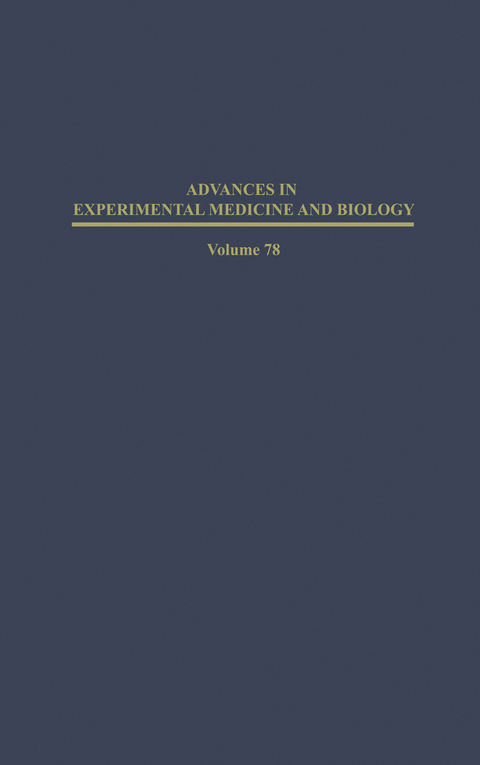
Tissue Hypoxia and Ischemia
Springer-Verlag New York Inc.
978-1-4615-9037-8 (ISBN)
The Biochemistry of Physiologic Oxygen Sensors.- What is a molecular oxygen sensor? What is a transduction process?.- The oxygen sensing characteristics of microsomal enzymes.- Oxygen sensing heme proteins: monoxygenases, myoglobin and hemoglobin.- Peroxisomal enzymes and oxygen metabolism in liver.- Mitochondrial production of superoxide radical and hydrogen peroxide.- Mechanism of Oxygen Sensing in Tissues.- Chemoreception and transduction on neuronal models.- Oxygen tension sensors in vascular smooth muscle.- Comments on: oxygen tension sensors in vascular smooth muscle.- Mechanism of oxygen induced contraction of ductus arteriosus.- Prostaglandins and the control of muscle tone in the ductus arteriosus.- The sensing of oxygen tension in the pulmonary circulation.- The sensing of oxygen tension in the pulmonary circulation. Discussion.- Circulatory effects of tissue oxygen tension sensors.- Bioassay and pharmacologic evaluation of the adenosine hypothesis.- Mechanism of Oxygen Sensing in Tissues.- Introductory remarks: oxygen linked response of carotid chemoreceptors.- Convergence of stimuli in arterial chemoreceptors.- Intracellular studies of carotid body cells: effects of temperature, “natural” stimuli and chemical substances.- Tissue PO2 in the cat carotid body and related functions.- Some aspects of localization, depletion, uptake and turnover of catecholamines by glomus cells of the rat carotid body.- Catecholamines and 3?,5? cyclic amp in carotid body chemoreception in the cat.- Circulatory and Metabolic Aspects of Cerebral Hypoxia-Ischemia.- Metabolic aspects of cerebral hypoxia-ischemia.- Discussion: metabolic aspects of cerebral hypoxia-ischemia.- Regional changes in metabolism in hypoxia-ischemia.- Cyclic nucleotide levels in the gerbil cerebralcortex, cerebellum and spinal cord following bilateral ischemia.- Changes in PO2 and ion fluxes in cerebral hypoxia-ischemia.- Comments on: changes in PO2 and ion fluxes in cerebral hypoxia-ischemia.- Events marking irreversible injury.- Cerebral hemodynamic and metabolic alterations in stroke.- Cerebral hemodynamic and metabolic alterations in stroke: formal discussion of paper by Dr. Martin Reivich, et al..- Cerebral hemodynamic and metabolic alterations in hypovolemic shock.- Altered mitochondrial metabolism in circulatory shock.- Discussion of Presentation by A.G.B. Kovach.- Participants.
| Reihe/Serie | Advances in Experimental Medicine and Biology ; 78 |
|---|---|
| Zusatzinfo | XIV, 385 p. |
| Verlagsort | New York, NY |
| Sprache | englisch |
| Maße | 170 x 244 mm |
| Themenwelt | Medizin / Pharmazie ► Medizinische Fachgebiete |
| Studium ► 1. Studienabschnitt (Vorklinik) ► Anatomie / Neuroanatomie | |
| Studium ► 2. Studienabschnitt (Klinik) ► Pathologie | |
| ISBN-10 | 1-4615-9037-X / 146159037X |
| ISBN-13 | 978-1-4615-9037-8 / 9781461590378 |
| Zustand | Neuware |
| Haben Sie eine Frage zum Produkt? |
aus dem Bereich


